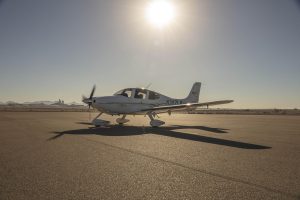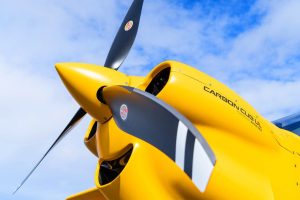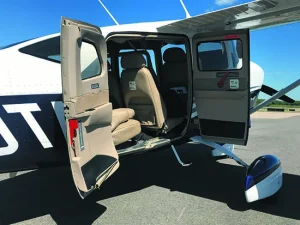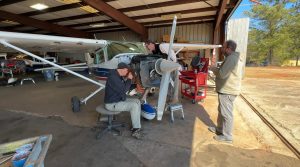
Aircraft Finance Market Update: 2025
Welcome to this week’s edition of “Clearance to Fly.” The aircraft financing world looks markedly different in 2025 than it did just a few years
If you are diving into the world of private aviation, you may have heard the terms “dry leasing” and “wet leasing”. In this article, we’re breaking down the meaning behind dry leasing and wet leasing and giving you the lowdown on what they entail and how they differ. Whether you’re a seasoned jetsetter or just dipping your toes into the skies, this crash course in aircraft leasing secrets will benefit you.
Disclaimer: A good rule of thumb before you make any purchases or leases in aviation is to retain a tax consultant and an aviation attorney. This can accidentally go sideways very quickly, and for the price of an hour in your aircraft, you can save yourself a headache, legal fees, or even jail time.
Wet and Dry leasing is commonly confused for “with or without fuel”.
The following comes from a very long, legal document put out by the FAA and some associations.
“…a lease of an aircraft with at least one crewmember. The prototypical example of an appropriate wet lease is the charter of an aircraft to a passenger by a properly certificated charter operator under FAR Part 135… Under a wet lease, compensation paid for the lease is the payment for an air transportation service, similar to riding in a taxicab.”
If you’ve ever chartered an airplane on demand, you’ve entered in to a “wet lease” agreement. There are two major exceptions to this rule. You can fly Part 91 (in layman’s terms, fly it like you own it) under “time sharing” and “interchange agreements.”
“…the lease of an aircraft without any crewmembers… Under a dry lease, the compensation being paid is typically in the form of a rental payment in exchange for the lessee’s own use (whether the lessee is a pilot or a passenger who has hired a pilot) of the equipment being rented, analogous to obtaining a rental car for one’s ground transportation needs.”
Think of it as leasing a car vs. renting. A dry lease is usually best served for pilots or individuals who need to fly an aircraft type occasionally but not frequently. A risk here is that the crew may not be as familiar with that airplane or you will have to contract pilots. Keep in mind there can be nuanced insurance implications on a dry lease as well. Traditionally, a dry lease is executed between an aircraft owner (you) and a part 135 operator (the lessee) where the part 135 operator provides pilots. When you fly in the plane, the aircraft would operate under part 91 (less restrictions.) We’ll break down the financials on that later.
If you’re going to place your aircraft on the open market to charter, meaning anyone can charter at any price, you’ll need to place it under Part 135 and with a trusted operator. These airplanes will undergo far more rigorous maintenance and safety checks, and the pilots have much more stringent training and operational requirements.
If not on the open market and not the owner flying the aircraft, the aircraft can fly under what’s called Part 91 Subpart K, or, Time Sharing Agreements (don’t worry, no pushy sales pitches on buying a timeshare at the beach here). When you own a fractional share through Netjets, Volato, or Airshare, you’re also flying under Part 91 Subpart K. This also applies to agreements between companies/individuals. You can read more at this link, but basically you can charge direct operating costs of that flight (fuel, landing fees, catering, etc.) plus a 100% markup for the price of fuel, lubricants, and other additives.
If you owned a Citation CJ4 Gen2 that burns 202 gallons per hour at $7.61 a gallon, you can legally charge an additional $1,537 an hour above and beyond the direct costs to operate the flight ($1,537 in fuel x2, or $3074). This has to pay for maintenance reserves ($1,690 an hour) and crew salaries. Basically, you’ll lose $140+ an hour to let someone wet lease your airplane under Part 91K.
If you’re on the other side of the equation, take the lease! It’s the cheapest way to fly because they legally can’t charge you more than 2x the cost of fuel, which is basically the cost of if you owned the plane minus the fixed expenses of hangar, insurance, etc.
This exception is very convenient, especially if you are friendly with another aircraft owner at your airport or somewhere close. This allows each to fly the other pilot’s airplane under Part 91F, for an in-kind hourly exchange. In the event that it is an exchange for hourly in a G450 vs. a Phenom 300, the G450 owner can charge an hourly difference between the two to make up for the different operating cost. For the G450 owner, they can fly a “budget trip” on the Phenom 300.
This makes sense for Phenom 300 owners that have regional travel with 2-4 passengers for 80% of the time, but 4-6 trips a year in a larger cabin jet for vacation or other purposes. Trade out the hours with someone you know who owns a larger cabin jet, and still keep the airplane that fits their mission for the other times of the year. You don’t have to own the airplane you need for 20% of the missions.
There are some other details around it that you can find here.
Dry leasing is a term many are familiar with, and is the traditional way to “make money” on your airplane. Don’t forget, you can’t house hack a jet. The best way to think about it is you are able to fly very cheaply when you own the jet, and you get to offset some of your monthly fixed cost expenses with the revenue generated by open market charter. There is margin when renting to a third party in a dry lease agreement on a per hour basis, and as the owner you are entitled to a portion of this margin.
So how do you dry lease an airplane? You create a contract that clearly outlines what the qualified renter (the person who is chartering the jet), the operator, and the owner will pay for per hour. A good aviation attorney should have a boiler plate here. There are many costs associated with flying the airplane, but here are the ones that the qualified renter, the operator, and the owner traditionally pay for.
You are taking on some depreciation risk when you dry lease an airplane. You are allowing someone else to fly the airplane while it is on your books, granted you likely bonus depreciated the airplane (100% in 2022, 80% in 2023, 60% in 2024). When you go to sell the airplane, there will be more time on the engines and airframe than if you flew by yourself. This hasn’t mattered since 2020, but it could matter in a less chaotic used jet market.
You are also exposing yourself to needing to pre schedule your jet time, which slightly defeats the purpose. If you want to go to LA for dinner and the jet is rented out, you might be out of luck.
Some people also are particular and don’t want other people on their jet. With the cost to fix the red wine stain down the center aisle, many prefer it be their spouse that did the spilling. Many people have a preference and choose to keep it.
If you can, underwrite with no dry lease agreement. If you’ve never owned an airplane, you likely don’t know your preference. In an attempt to not sound like Dave Ramsey, can you make payments without dry leasing (aka, putting your airplane on a charter)? If so, great. If not, you need to be very comfortable with other people flying your airplane.
You also need to be comfortable with macroeconomic shifts, because charter flying is the least sticky way to fly private. The retail flights are the first to go in an economic downturn.

Welcome to this week’s edition of “Clearance to Fly.” The aircraft financing world looks markedly different in 2025 than it did just a few years

Welcome to this week’s edition of “Clearance to Fly.” In the aviation world, insurance cycles mirror the broader industry’s ups and downs. After years of

Welcome to this week’s edition of “Clearance to Fly.” When it comes to aircraft purchases, timing truly is everything. Whether you’re eyeing that Cessna 172

Welcome to this week’s edition of “Clearance to Fly.” The dream of aircraft ownership is one that captivates many aviation enthusiasts. While owning your own

Welcome to this week’s edition of “Clearance to Fly.” Aircraft ownership comes with significant responsibilities, and perhaps none is more critical than ensuring your aircraft

Welcome to this week’s edition of “Clearance to Fly.” In the world of aircraft ownership, few decisions impact your flying experience as much as selecting

At Flying Finance, we’re your trusted partner in aviation financing. With a deep understanding of the aviation industry and a commitment to making your dreams take flight, we provide tailored financing solutions for business jets, piston aircraft, turboprop aircraft, helicopters and more. A financier who understands aviation.
© 2024 Flying Finance. All rights reserved. Privacy Policy